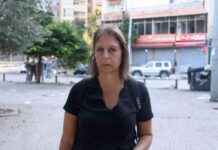Life in Damascus after Assad: A Tale of Joy and Fear
In the heart of Damascus, Syria, a wave of emotions swept through the city as former President Bashar Assad’s reign came to an abrupt end. Thousands poured into Umayyad Square, filling the streets with jubilation and trepidation in equal measure. The air buzzed with a mix of celebration and nervous energy, marking a pivotal moment in the city’s history.
The Celebration
As the news of Assad’s departure spread like wildfire, Damascenes took to the streets in an impromptu parade to revel in their newfound freedom. A voice boomed from loudspeakers, urging Syrians to hold their heads high as they embraced their identity as free citizens. Young men and children climbed over abandoned tanks, chanting slogans against Assad’s legacy, while militants fired celebratory gunshots into the air, leaving behind a trail of spent cartridges.
A New Reality
For many residents of Damascus, the post-Assad era signaled a delicate balance between joy and apprehension. Muna Maidani, a 28-year-old mother of two, captured the sentiment perfectly as she walked near Umayyad Square. The unexpected rebel presence in the city took her by surprise, yet she found solace in the hope of a brighter future. Her sister, Shaymaa, shared her optimism, despite the echoes of gunfire that reverberated through the streets.
Building a New Syria
Among the militants who descended upon Damascus, a sense of purpose and determination prevailed. Abdul-Ilah Hmoud, a 24-year-old from Idlib, envisioned a transformed Syria, free from tyranny and oppression. As he marveled at the beauty of the capital, he spoke of a vision where all Syrians would have equal rights and opportunities. The promise of a brighter tomorrow fueled their mission to rebuild a nation torn apart by conflict.
Facing Uncertainty
As the dust settled on Assad’s regime, Damascus grappled with the aftermath of decades of Baath Party rule. The city bore witness to a swift transition of power, with opposition fighters seizing control of key institutions with minimal resistance. Mohsen Haykal, a bearded militant at a highway checkpoint, recounted the ease with which they overcame Assad’s loyalists, highlighting the crumbling facade of his once formidable regime.
In the midst of chaos and uncertainty, voices of concern emerged from Syria’s minority communities, wary of the Islamist militants’ ascent to power. Jamil Yashou, a priest in Damascus’s Christian quarter, voiced his fears of a future marred by sectarian violence and political turmoil. While Assad’s fall marked the end of an era, the road ahead remained fraught with challenges and unanswered questions.
As Damascus navigated the complexities of a post-Assad reality, its residents grappled with conflicting emotions of hope and fear. The city stood at a crossroads, poised to redefine its identity and shape its destiny in the wake of a seismic shift in power. The echoes of celebration and gunfire mingled in the air, painting a portrait of a city on the cusp of transformation.



























